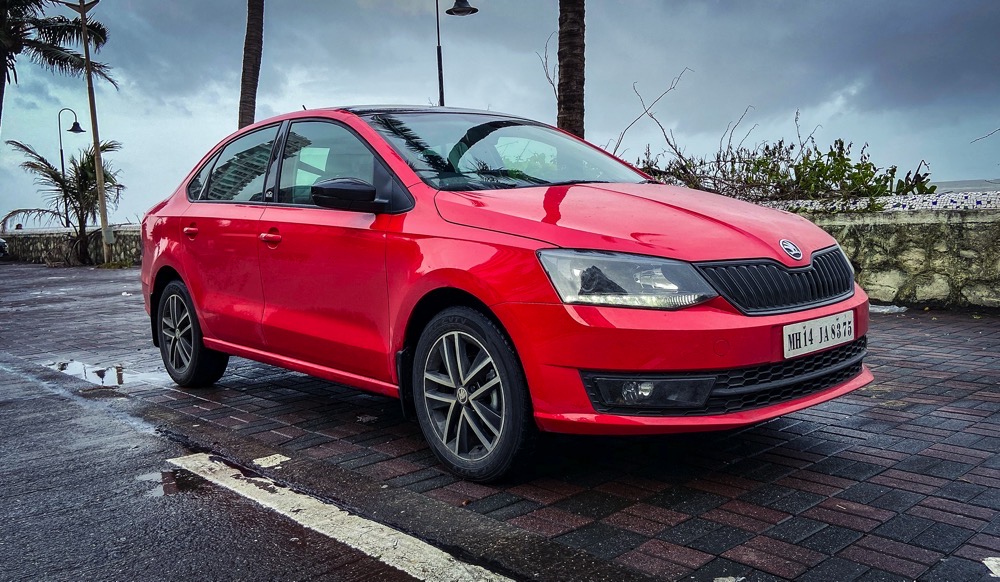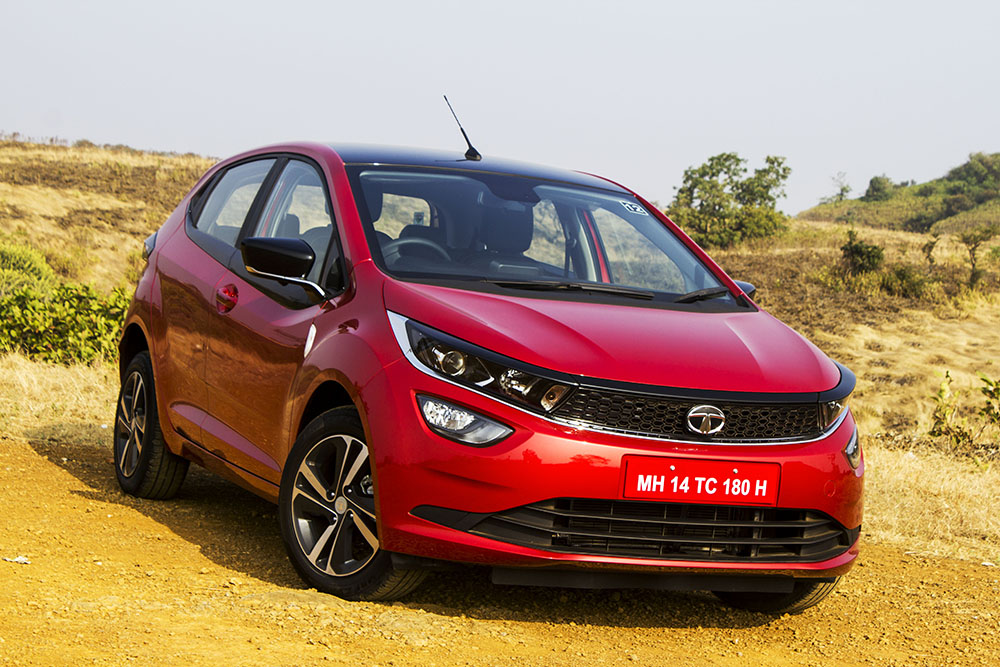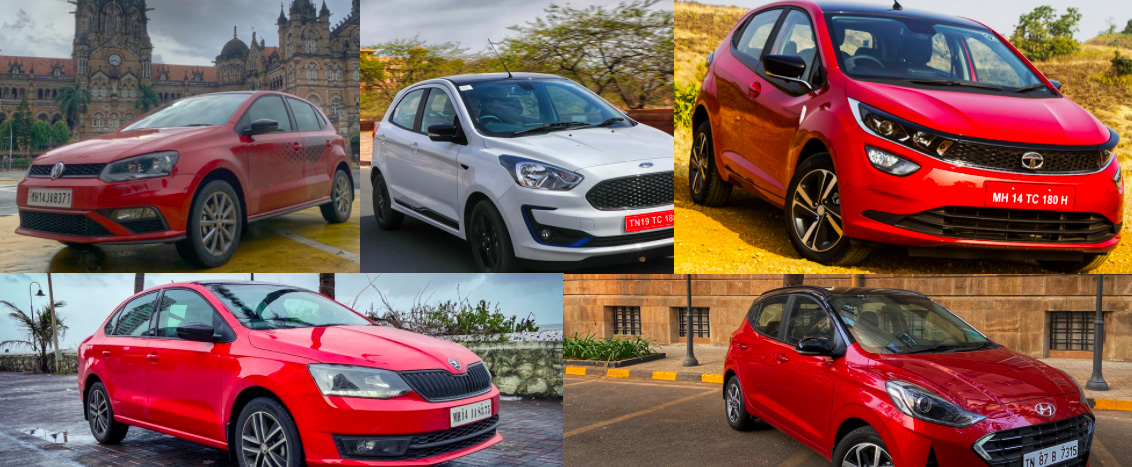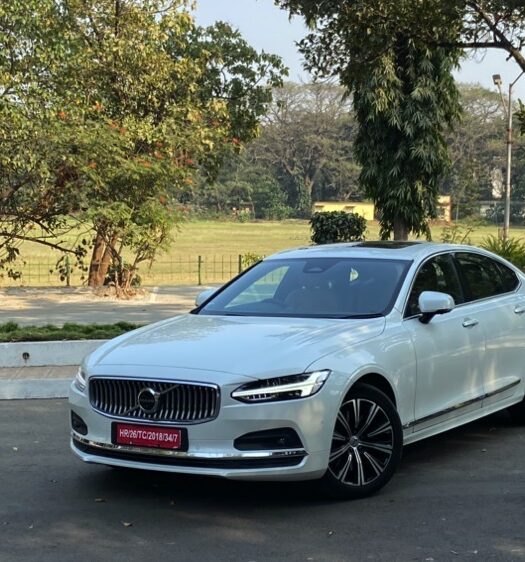Skoda Rapid Rider 1.0 TSI

While the fact that a German has made it to this list yet again may not be a surprise, what might be is the fact that it is a full-size C-segment sedan and the fact that it doesn’t breach the 10L OTR mark either!
The Skoda Rapid received a new base variant post BS-6 implementation known as the Rapid Rider. The Rider gets the same engine as the rest of the variants (A 1.0L TSI seen in the Polo), but skimps out on a lot of good to have features that eventually lands it bang in the middle of compact sedan and premium hatchback territory in terms of pricing. At an ex-showroom price of just under 8L, the Rapid Rider is the cheapest full-size sedan money can buy.
The Rider’s strengths don’t end there. The same 1.0 TSI seen in the Polo makes its way into the Rapid’s engine bay, packing 110hp and 175nm of torque. This means the car will sprint from 0-100 in 10s, making it one of the quickest C-segment sedans. Overall handling and driving dynamics are mature as well, with a host of aftermarket options available should you find the need to upgrade.
Just like the Polo, the Rapid’s weaknesses include its age and some missing features. Having said this, the Rider variant comes with climate control, an infotainment system that supports AUX, USB and Bluetooth streaming, electrically adjustable wing mirrors and all four power windows, a feature list which is laudable for a car that easily remains below the 10L barrier OTR. An additional 40K will add a touchscreen infotainment system along with android auto and apple carplay from the factory if the need be.
Tata Altroz i-Turbo

The Altroz was initially launched with a 1.2 NA petrol that wasn’t the best in the business to say the least. It didn’t have the best NVH and overall performance was mediocre at best. Almost a year later, TATA has offered a 1.2 3-pot turbo petrol on the Altroz and dubbed it the i-turbo along with a 1.5L turbo diesel.
Unlike many of its competitors, the Altroz i-Turbo isn’t the quintessential cutting-edge direct injection high power output motor to its naturally aspirated counterpart. Power figures stand at 110hp and 140nm of torque, with the latter being the lowest among the current crop of turbo petrols. The 0-100 sprint also takes about 13s, which isn’t the fastest by any means. Having said this, the Altroz does have excellent high-speed mannerisms paired to an equally agile and confidence inspiring steering wheel. It is also one of the newest offerings in this segment complemented by an expansive equipment list. If petrol isn’t your thing, the 1.5L turbo diesel also comes across as a very versatile choice, for it is as quick as the petrol while offering better fuel economy for those with higher usage.
As mentioned before, the only chinks in the armor for the Altroz are the fact that TATA could have offered the Nexon’s state of tune on both the 1.2L Turbo petrol and the 1.5L turbo diesel paired to a 6-speed gearbox. It remains a contemporary and no-nonsense choice otherwise.
Hyundai Grand i10 NIOS 1.0L Turbo Petrol

Hyundai wasn’t a brand that was known for making fun to drive cars in hindsight. Though the Korean carmaker has consistently been setting benchmarks when it comes to equipment lists, looks and even refinement levels for the past decade, the overall ride and handling balance did leave a lot to be desired.
All said an done however, Hyundai has worked hard on its suspension setups and come a long way in suspension tuning in contrast to the old days. What has also changed is the fact that the auto giant has hopped onto the turbo petrol bandwagon, starting with the 1.4 4-cylinder Turbo petrol seen in the Seltos/Creta twins and now the 1.0 3-pot turbo petrol seen in the Grand i10 Nios, the Aura and even the Kia Sonet.
The car of interest here is the Grand i10 NIOS. Introduced as a successor to the acclaimed Grand i10, it came with the option of a 1.2 3-pot Turbo-diesel or a 1.2 4-pot naturally aspirated petrol. While overall performance was nothing to complain about when it came to both engines, it was only a matter of time before the 1.0 3-pot Turbo petrol made its way into the i10 NIOS. Having a power output of close to 100hp and a torque figure of 172nm, the small capacity turbo petrol packs quite a punch. What helps matters further is the fact that the i10 NIOS weighs in at a shade over a tonne, giving it a power to weight ratio of 100hp/tonne.
0-100 comes up in under 10s, with a top whack of 180 kmhr. The motor is free revving for the most part and has a nice thrum to it as you go up the revs. What might play spoilsport in the enthusiast recipe is the light steering and the suspension which is set on the softer side. The turbo variant only gets a blacked out grille along with the “turbo” badge as compared to the standard NIOS, and that’s a bit of a downer.
What is impressive though is that the NIOS Turbo carries the same strengths as its standard sibling. The well-equipped cabin with good quality plastics along with the modern and contemporary styling are among the best on this list. All in all, the NIOS might not be a an outright driver’s car, but the capable engine and top notch interior quality make it a very strong contemporary and no nonsense contender on this list.
Author: Ananth Iyer








